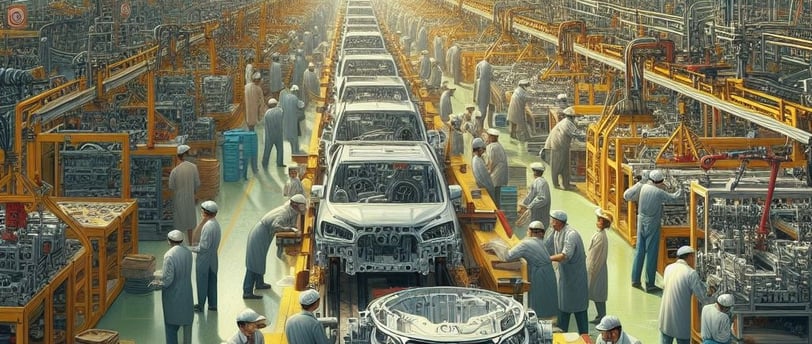Indian Metal Business


The Indian Auto Ancillary Industry and its Growth
The Indian auto ancillary industry is a vital segment of the Indian automotive sector, producing and supplying various components and parts that are essential for the manufacturing and functioning of vehicles. The industry comprises several sub-segments, such as engine parts, drive gearbox and steering parts, body and chassis components, suspension and brake parts, electrical equipment, and others. The industry also caters to different segments of the automotive market, such as original equipment manufacturers (OEMs), aftermarket, exports, and domestic.
The auto ancillary industry has been growing steadily over the years, driven by factors such as increasing vehicle production and sales, rising demand for sophisticated and advanced components, cost advantages, skilled workforce, and favorable government policies. According to a study conducted by the India Brand Equity Foundation (IBEF), the automotive components industry registered a CAGR of 6%, reaching $49.3 billion in FY20. Exports grew at a CAGR of 7.6% during 2016-2020, to reach $14.5 billion during the same financial year.
However, the industry also faced some challenges in recent times, such as the impact of the COVID-19 pandemic, which disrupted the supply chain and demand for vehicles and components. The industry also had to cope with regulatory changes, such as the transition from BS-IV to BS-VI emission norms, which required significant investments and technological upgradation. Moreover, the industry faces competition from global players, who have established their presence in India through joint ventures or acquisitions.
Despite these challenges, the industry is expected to recover and grow in the coming years, supported by various factors. Some of these are:
Growing content per vehicle: As vehicles become more complex and feature-rich, the demand for more components per vehicle increases. For instance, wiring harnesses are one of the critical components that are required for connecting various electrical and electronic systems in a vehicle. The demand for wiring harnesses has been increasing across vehicle categories, including two-wheelers and commercial vehicles. Similarly, other components such as sensors, infotainment systems, safety systems, etc., are also witnessing higher demand.
Low base effect: The auto ancillary industry witnessed a sharp decline in FY21 due to the pandemic-induced lockdowns and slowdown in vehicle production and sales. However, with the easing of restrictions and revival of demand in the second half of FY21, the industry started to recover. The low base effect of FY21 will also help the industry to post higher growth rates in FY22 and FY23.
Higher realizations: The auto ancillary industry has been able to pass on some of the cost increases due to rising commodity prices and forex fluctuations to its customers. This has helped the industry to improve its margins and profitability. Moreover, the industry is also focusing on value-added products and services that can fetch higher realizations.
Government support: The government has been supportive of the auto ancillary industry through various initiatives and policies. For instance, the Production Linked Incentive (PLI) scheme aims to boost domestic manufacturing and exports of automotive components. The scheme offers incentives ranging from 4% to 6% on incremental sales for five years. The scheme covers various segments of auto components such as electronic products, advanced chemistry cell battery products, etc. The government has also reduced customs duty on certain raw materials and inputs used by the auto ancillary industry.
Technology adoption: The auto ancillary industry is adopting new technologies and innovations to meet the changing needs of customers and regulations. For instance, the industry is investing in electric vehicle (EV) components such as battery packs, electric motors, power electronics, etc., to tap into the growing EV market. The industry is also exploring new avenues such as connected vehicles, autonomous vehicles, shared mobility, etc., which offer new opportunities for component suppliers.
According to ICRA, a rating agency, the auto ancillary sector revenues are expected to grow by 8-10% in FY23. The agency has also revised its outlook for the sector from negative to stable. The agency expects that the sector will benefit from stable demand conditions in domestic and export markets, improved operating efficiencies, better product mix, and higher capacity utilization.
The Indian auto ancillary industry is thus poised for growth in the future, backed by strong fundamentals and favorable factors. The industry has shown resilience and adaptability in overcoming challenges and seizing opportunities. The industry has also demonstrated its capabilities and competitiveness in delivering quality products and services to its customers across segments and geographies.

